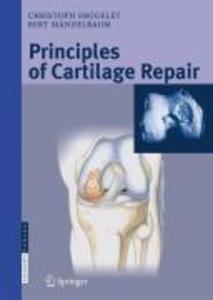
Sofort lieferbar (Download)
Cartilage defects affect patients of all age groups. Surgeons, teamdoctors, general practitioners and physiotherapists alike are expected to provide adequate care.
Only individual treatment plans combining a well balanced choice of various options will be successful. Background knowledge, operative and non-operative therapies are described in concise chapters:
- Articular cartilage biology
- Diagnostics
- Surgical techniques
- Symptomatic and alternative medications
- Physiotherapy
Diagnostic findings and surgical procedures are generously illustrated by aquarelles and colour photographs. Recommendations for additional reading, description of important clinical scoring systems and a listing of analytic tools are added for further information.
Inhaltsverzeichnis
Articular Cartilage Biology: Chondrocytes; Collagen; Proteoglycans; The subchondral bone. - Etiology of Articular Cartilage Lesions: Trauma; Malalignments; Meniscus; Instability; Osteochondrosis dissecans (OD); Osteoarthritis; Rheumatoid arthritis; Genetic factors; Obesity; Cartilage tumors; Microtrauma. - Diagnostics: Clinical examination; Radiography; Magnetic resonance tomography; Classification of articular cartilage lesions and criteria for choosing appropriate therapy. - Conservative Treatment of Articular Cartilage Defects: Drug treatment; Physical therapy. - Operative Treatment of Articular Cartilage Defects: Refixation of detached cartilage fragments; Joint lavage/cartilage shaving/débridement; Bone marrow stimulation techniques (drilling, abrasion, microfracture); Augmented microfracture techniques; Osteochondral transplantation; Autologous chondrocyte transplantation (ACT); ACT New procedures; Correctional osteotomies; Implantation of non-resorbable cartilage replacements. - Important Analytic Methods.
Produktdetails
Erscheinungsdatum
30. September 2008
Sprache
englisch
Seitenanzahl
121
Dateigröße
7,56 MB
Autor/Autorin
Christoph Erggelet, Bert R. Mandelbaum
Verlag/Hersteller
Kopierschutz
mit Wasserzeichen versehen
Produktart
EBOOK
Dateiformat
PDF
ISBN
9783798515932
Entdecken Sie mehr
Bewertungen
0 Bewertungen
Es wurden noch keine Bewertungen abgegeben. Schreiben Sie die erste Bewertung zu "Principles of Cartilage Repair" und helfen Sie damit anderen bei der Kaufentscheidung.









